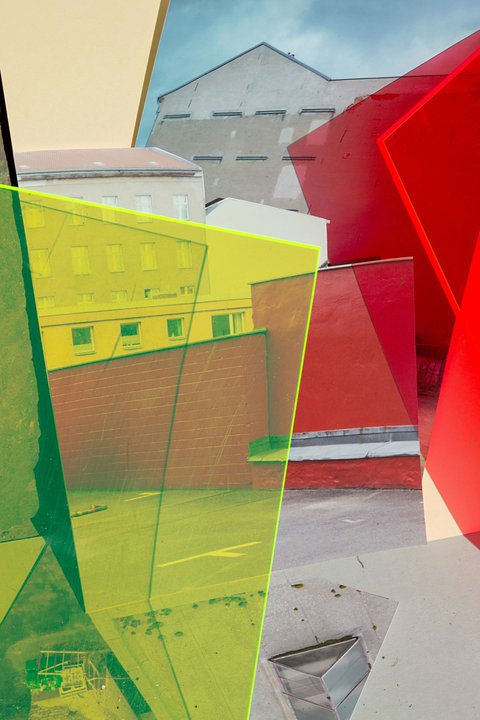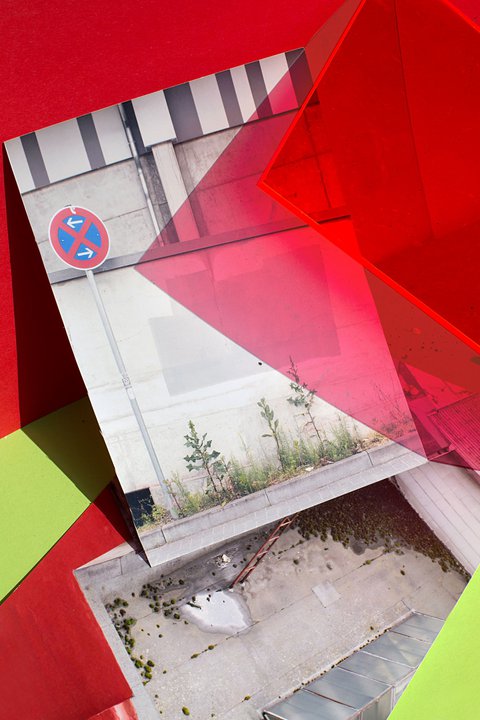»All men are becoming city dwellers« – that seems to be the motto of our time. Whereas in Beethoven’s time it was nature that provided artistic edification and inspiration, today it is the city that – almost unquestioned until the pandemic – irresistibly attracts all creative people. What is the magic of the urban space? What makes it so culturally dominant?
#essay Arno Lücker
City – Country – Beethoven

In its current form, the metropolitan space often serves as a driving force for artistic work: the almost limitless availability of other artists’ cultural experiences, the vibration of the city, the insomnia, the erotic, pleasurable distraction, the noise. The distance from evaluative, moralising judgements about the body, sexuality, clothing, lifestyle; the virulent resulting feeling of real freedom of creation – beyond the limits of what has been achieved artistically so far. Last but not least, the exchange of closeness with others; the certainty of the rightness of temporary rejection; the feeling of being caught in phases of failure. But above all, the physicality of love as a utopia of self-discovery. The diversity of sounds, languages and lifestyles. The city as a projection screen for everything the seeker is looking for. A brightly shining lantern for the urge to keep up with the times, not to miss out on anything, to escape the neighbour’s glances over the garden fence.
Menschliches Leid und freiheitliche Erlösung im urbanen Lebens(t)raum – das sind die Themen des großen Tanzabends mit dem Ballett am Rhein und Live-Musik von David Lang und SOPHIE.
»Zwischenwelten« / Ballett am Rhein / 10. & 13.9.2022 / Oper Bonn

If Beethoven lived in a modern city: He would have massive problems carrying on as he did in Vienna. Simply because of the current housing shortage. It is said that he changed his home in the city – the musical hotspot of the 18th and 19th centuries – more than forty times. Here in the side wing of an aristocratic patron, there in the domestic community of a woman with whom he may have (soon) been »madly in love«. Feelings inside. Outside, the city. Vienna. The »urban space«, but not yet marked by machines and resettlements; iron landmarks of the early industrialisation that was growing.
Musical diversity from urban spaces of the 18th, 19th and 20th centuries: »Kadesha: Beethoven« / 16.9.2022 / Bonn University Aula
While Brahms (Salzkammergut) and Mahler (South Tyrol) retreated to the countryside to compose at the end of the 19th century in the age of industrialisation, when we think of ›Beethoven in nature‹ we immediately think of his Sixth Symphony. Country folk performing a dance – and, oh my God, a huge thunderstorm is brewing! Beethoven as a musing, descriptive composer of motivic observation, as a realiser of rural feelings in the countryside. And the city? He was obviously drawn to it, even if – on the threshold of the industrial age – he still had an intact, sentimental relationship with nature in the best sense of the word.
The bird chirps, the thunder rumbles: Beethoven plays with natural sounds in his 6th Symphony »Pastorale«. The resident ensemble Spira mirabilis attempts a special interpretation of the famous work – followed by an audience discussion: 8 & 9 September 2022 / Pantheon & Rhein-Sieg-Forum

Beethoven did not grow up in cramped conditions in Bonn. On the contrary, the dimensions of the Beethoven family’s home are sometimes even described as »spacious«. And Beethoven loved nature, which offered opportunities for contemplation (and observation) around Bonn. In various biographies, it is said that Beethoven virtually »fled« from the city (which we certainly don’t have to imagine as hectic and large) to the countryside. He hated crowds. Beethoven did not want to deal with the ›pressure‹ of general living environments (and alleyways) (or: avoided the ›narrowness of normality‹).
Music, across floors: Bonn’s tallest high-rise attracts visitors with a walk-in concert on different levels including breathtaking views of the city and nature: »Post Klassik Vertikal« / 11.9.2022 / Post Tower
But Beethoven did not simply ›flee‹. He grabbed a telescope, looked for vantage points and is said to have gazed into the distance for hours. Visionary, like his music! – one might exclaim. Some writers have labelled such early traits of withdrawal as ›misanthropic‹, in an attempt to sketch out the later Beethoven. Jan Caeyers, on the other hand, points out: The young Beethoven led the life of a court musician. He probably liked to wear the elector’s gala livery: a sea-green tailcoat, a waistcoat with gold buttons, green breeches and white silk stockings, and a sword with a silver hilt. Beethoven was not very tall, but slender and strongly built. His pockmarked face was brown, he had dark hair, black eyebrows and a penetrating gaze that earned him the nickname »Spangol« (Spaniard). The teenager was proud of himself and liked to walk around the city dressed elegantly and fashionably. His status as a young professional musician in the service of the court gave him self-confidence; music had become a means of self-realisation for him. The young Beethoven, strolling through Bonn almost like a self-satisfied dandy?
If you wanted to redefine the dandy and bring it into the reality of life in the gender-fluid metropolis, the members of Chin Chin would be a wonderful model. At our festival headquarters, they celebrate a festival of love for all people: »Chin Chin: Music brings people together, yeah!« / 10.9.2022 / Viktoriabad

And in Vienna? Although in 1792 – the year Beethoven moved to Vienna – there were already around 250,000 people living here – according to a story told by a travelling Englishman, you could walk around Vienna in less than an hour – Vienna was still one of the most densely populated cities in Europe in Beethoven’s day. Nearly 60,000 people lived in large blocks of flats in the city centre, each at least four storeys high. As early as 1716, the English writer Lady Mary Montagu (1689–1762) described Vienna’s architecture as if several cities had been built on top of each other. However, as Caeyers also impressively reports, the Vienna built ›on top‹ probably did not harmonise with the remaining narrowness of the medieval alleys and squares. An oppressive atmosphere – combined with the stench – and yet home to the greatest talents of the age.
They know their way around houses built ›on top‹: Alarm Will Sound from New York compress the buzz of the big city into a dense fabric of sound. Various concerts from 15–17 September 2022
In the spring of 1802, Beethoven suffered a breakdown, partly triggered by the hopelessness of his love for Giulietta Guicciardi. His doctor suggested that he withdraw from the hostile (urban) music world for the time being in order to escape the hustle and bustle of the city. On 22 April 1802, Beethoven wrote: »A lot of business – and at the same time many annoyances – make me completely useless for some things for a while.« Beethoven did indeed repeatedly withdraw into nature. And certainly remembered his largely happy childhood there; perhaps in his afternoon walk dreams he saw the kites he had built himself in Bonn fluttering in the sky. And time and again, Beethoven felt an immediate closeness to God in nature. The creator of man and nature, who shows himself through and in nature much more than in the city. The self-chosen escape from the city: it is good for »all people«.
This article was written for the 2022 programme book and was first published there.